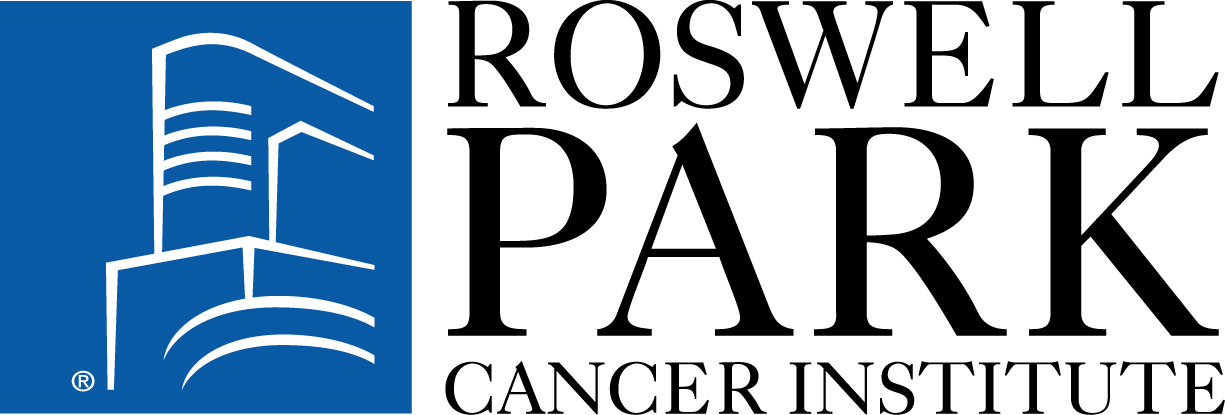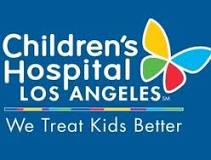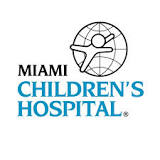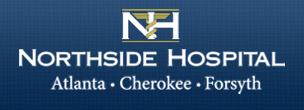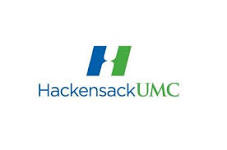Optimizing Haploidentical Aplastic Anemia Transplantation (BMT CTN 1502)
| Status: | Recruiting |
|---|---|
| Conditions: | Anemia |
| Therapuetic Areas: | Hematology |
| Healthy: | No |
| Age Range: | Any - 75 |
| Updated: | 12/19/2018 |
| Start Date: | July 3, 2017 |
| End Date: | February 2022 |
| Contact: | Alyssa Ramirez |
| Email: | aramirez@emmes.com |
| Phone: | 301-251-1161 |
Optimizing Haploidentical Aplastic Anemia Transplantation (CHAMP) (BMT CTN #1502)
This study is a prospective, multicenter phase II study with patients receiving
haploidentical transplantation for Severe Aplastic Anemia (SAA). The primary objective is to
assess overall survival (OS) at 1 year post-hematopoietic stem cell transplantation (HSCT).
haploidentical transplantation for Severe Aplastic Anemia (SAA). The primary objective is to
assess overall survival (OS) at 1 year post-hematopoietic stem cell transplantation (HSCT).
Acquired SAA is a rare bone marrow failure disorder with an estimated annual incidence of 2
cases per million and with over 600 new cases in the United States each year. A major
challenge in treating acquired SAA is the management of patients who are refractory to
immunosuppressant therapy (IST) or have relapsed after IST. HSCT is the only curative option
for these patients but many are ineligible because they lack a suitable donor. The Blood and
Marrow Transplant Clinical Trials Network (BMT CTN) seeks to increase options for these
patients by using novel therapeutic strategies of GVHD prophylaxis with PTCy to expand the
donor pool to include haploidentical donors. The goal of this protocol is to test whether
optimized approaches using haploidentical donors will achieve acceptable outcomes in SAA
patients.
cases per million and with over 600 new cases in the United States each year. A major
challenge in treating acquired SAA is the management of patients who are refractory to
immunosuppressant therapy (IST) or have relapsed after IST. HSCT is the only curative option
for these patients but many are ineligible because they lack a suitable donor. The Blood and
Marrow Transplant Clinical Trials Network (BMT CTN) seeks to increase options for these
patients by using novel therapeutic strategies of GVHD prophylaxis with PTCy to expand the
donor pool to include haploidentical donors. The goal of this protocol is to test whether
optimized approaches using haploidentical donors will achieve acceptable outcomes in SAA
patients.
Inclusion Criteria:
1. Patient is < 75 years of age at time of enrollment.
2. Confirmed diagnosis of SAA, either from initial diagnosis or follow-up assessments,
defined as:
1. Bone marrow cellularity < 25% or marrow cellularity < 50% but with < 30% residual
hematopoietic cells.
2. Two out of three of the following (in peripheral blood): Neutrophils < 0.5
x10^9/L, Platelets < 20 x10^9/L, or Reticulocyte count < 20 x10^9/L (<60 x 10^9/L
using an automated analysis)
3. No suitable fully matched related (6/6 match for human leukocyte antigen (HLA)-A and B
at intermediate or high resolution and DRB1 at high resolution using DNA-based typing)
or unrelated donor (8/8 match for HLA-A, B, C, and DRB1 at high resolution using
DNA-based typing) available. Search for an unrelated donor and enrollment on this
protocol may be abandoned if the clinical situation dictates an urgent transplant in
the best medical judgment of the treating provider. The definition of clinical urgency
may include a low likelihood of identifying a suitable matched unrelated donor within
6-8 weeks from referral and the medical need to choose a donor without further delay
beyond that time.
4. Failed at least one trial of immunosuppressive therapy (IST) by being refractory or
having relapsed. IST could have included ATG based regimens, calcineurin inhibitors
and/or other higher dose therapy directed at the treatment of primary SAA.
5. Available relative of the patient who is a haploidentical match, including biological
parents, siblings or half siblings, children, uncles/aunts, first cousins, etc.
Eligible haploidentical donors will have 2-4 mismatches if HLA-A, -B, -C, and -DRB1
typing is used; 2-5 mismatches if HLA-A, -B, -C, -DRB1, and -DQB1 typing is used; and
2-6 mismatches if HLA-A, -B, -C, -DRB1, -DQB1, and -DPB1 typing is used. A
unidirectional mismatch in either the graft versus host or host versus graft direction
is considered a mismatch. The donor and recipient must demonstrate that they are a
full haplotype match by being identical at a minimum of one allele (at high resolution
DNA-based typing) at the following genetic loci: HLA-A, -B, -C, and DRB1 if 8 allele
typing is used; HLA-A, -B, -C, -DRB1, and -DQB1 if 10 allele typing is used; and
HLA-A, -B, -C, -DRB1-, DQB1, and -DPB1 is 12 allele typing is used by the local
center. See Section 2.4 for additional information.
6. Patient and/or legal guardian must sign informed consent for HSCT.
7. The haplo donor and/or legal guardian must be able to sign informed consent documents.
8. The potential haplo donor must be willing and able to donate bone marrow.
9. The weight of the haplo donor must be ≥ 20 kg.
10. Adequate organ function defined as:
1. Cardiac: Left ventricular ejection fraction (LVEF) at rest ≥ 40%. For patients
aged < 13 years, shortening fraction (SF) ≥ 26% by echocardiogram or Multi Gated
Acquisition Scan (MUGA) may be substituted for LVEF.
2. Hepatic: Total bilirubin < 3.0 x the upper limit of normal (ULN) for age
(patients who have been diagnosed with Gilbert's Disease are allowed to exceed
this limit) and alanine aminotransferase (ALT) and aspartate aminotransferase
(AST) < 5.0 x ULN for age.
3. Renal: For patients > 13.0 years of age at the time of enrollment: estimated
creatinine clearance > 50 mL/minute (using the Cockcroft-Gault formula and actual
body weight). For patients < 13.0 years of age at enrollment: Glomerular
Filtration Rate (GFR) estimated by the updated Schwartz formula ≥ 90 mL/min/1.73
m2. If the estimated GFR is < 90 mL/min/1.73 m^2, then renal function must be
measured by 24-hour creatinine clearance or nuclear GFR, and must be > 50
mL/min/1.73 m^2.
4. Pulmonary: For patients > 13.0 years of age: Diffusing capacity of the lung for
carbon monoxide (DLCO) (corrected/adjusted for hemoglobin) > 40% and forced
expiratory volume in one second (FEV1) > 50% predicted (without administration of
bronchodilator) and forced vital capacity (FVC) > 50% predicted. For patients <
13.0 years of age unable to perform pulmonary function tests (PFT) due to age or
developmental ability: (1) no evidence of dyspnea at rest and (2) no need for
supplemental oxygen and (3) O2 saturation > 92% on room air at sea level (with
lower levels allowed at higher elevations per established center standard of care
(e.g., Utah, 4,200 feet above sea level, does not give supplemental oxygen unless
below 90%)).
11. Karnofsky or Lansky performance status ≥ 60%.
12. Females and males of childbearing potential must agree to practice 2 effective methods
of contraception at the same time or agree to abstinence.
Exclusion Criteria:
1. Inherited bone marrow failure syndromes. At minimum, the diagnosis of Fanconi anemia
must be excluded by diepoxybutane (DEB) or equivalent testing on peripheral blood or
marrow.
2. Clonal cytogenetic abnormalities consistent with pre-myelodysplastic syndrome
(pre-MDS) or MDS on marrow examination (e.g. Monosomy 7).
3. Presence of anti-donor HLA antibodies (positive anti-donor HLA antibody is defined as
a positive cross-match test of any titer by complement-dependent cytotoxicity or flow
cytometric testing or the presence of anti-donor HLA antibody to the high expression
loci HLA-A, B, C, DRB1, or DPB1 with mean fluorescence intensity (MFI) > 1000 by solid
phase immunoassay).
4. Prior allogeneic stem cell transplant.
5. Prior solid organ transplant.
6. Known life-threatening reaction (i.e., anaphylaxis) to Thymoglobulin® that would
prohibit use for the patient as this study requires use of the Thymoglobulin®
preparation of ATG.
7. Uncontrolled bacterial, viral, or fungal infection at the time of enrollment.
Uncontrolled is defined as currently taking medication and with progression or no
clinical improvement on adequate medical treatment.
8. Seropositive for the human immunodeficiency virus (HIV).
9. Active Hepatitis B or C determined by a detectable viral load of HBV or HCV.
10. Female patients who are pregnant (per institutional practice) or breast-feeding.
11. Prior malignancies except resected basal cell carcinoma or treated cervical carcinoma
in situ. Cancer treated with curative intent > 5 years previously will be allowed.
Cancer treated with curative intent ≤ 5 years previously will not be allowed unless
approved by the Protocol Chairs and/or Protocol Officer.
12. Alemtuzumab or ATG within 2 weeks of enrollment.
We found this trial at
26
sites
Click here to add this to my saved trials
Roswell Park Cancer Institute Welcome to Roswell Park Cancer Institute (RPCI), America's first cancer center...
Click here to add this to my saved trials
Childrens Hospital Los Angeles Children's Hospital Los Angeles is a 501(c)(3) nonprofit hospital for pediatric...
Click here to add this to my saved trials
Miami Children's Hospital Welcome to Miami Children
Click here to add this to my saved trials
3181 Southwest Sam Jackson Park Road
Portland, Oregon 97239
Portland, Oregon 97239
503 494-8311

Oregon Health and Science University In 1887, the inaugural class of the University of Oregon...
Click here to add this to my saved trials
1100 Fairview Avenue North
Seattle, Washington 98109
Seattle, Washington 98109
(206) 667-5000

Fred Hutchinson Cancer Research Center At Fred Hutchinson Cancer Research Center, our interdisciplinary teams of...
Click here to add this to my saved trials
Click here to add this to my saved trials
Northside Hospital Northside Hospital-Atlanta (in Sandy Springs) opened in 1970. The original facility had 250...
Click here to add this to my saved trials
Click here to add this to my saved trials
Click here to add this to my saved trials
1500 East Duarte Road
Duarte, California 91010
Duarte, California 91010
626-256-HOPE (4673)

City of Hope National Medical Center City of Hope is dedicated to making a difference...
Click here to add this to my saved trials
Duke Univ Med Ctr As a world-class academic and health care system, Duke Medicine strives...
Click here to add this to my saved trials
Click here to add this to my saved trials
Hackensack University Medical Center Hackensack University Medical Center, part of the Hackensack University Health Network,...
Click here to add this to my saved trials
1515 Holcombe Blvd
Houston, Texas 77030
Houston, Texas 77030
713-792-2121

University of Texas M.D. Anderson Cancer Center The mission of The University of Texas MD...
Click here to add this to my saved trials
Click here to add this to my saved trials
Click here to add this to my saved trials
Click here to add this to my saved trials
9000 West Wisconsin Avenue
Milwaukee, Wisconsin 53211
Milwaukee, Wisconsin 53211
Click here to add this to my saved trials
Click here to add this to my saved trials
Click here to add this to my saved trials
Click here to add this to my saved trials
Click here to add this to my saved trials
Click here to add this to my saved trials
Click here to add this to my saved trials
111 Michigan Ave NW
Washington, District of Columbia
Washington, District of Columbia
(202) 476-5000

Childrens National Medical Center As the nation’s children’s hospital, the mission of Children’s National Medical...
Click here to add this to my saved trials
